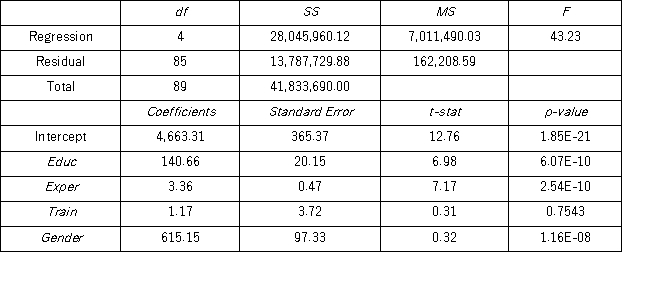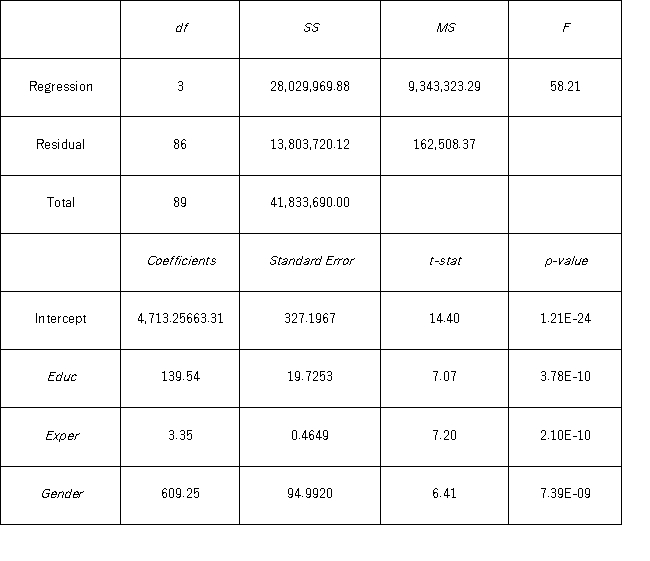To examine the differences between salaries of male and female middle managers of a large bank,90 individuals were randomly selected,and two models were created with the following variables considered: Salary = the monthly salary (excluding fringe benefits and bonuses) ,
Educ = the number of years of education,
Exper = the number of months of experience,
Train = the number of weeks of training,
Gender = the gender of an individual;1 for males,and 0 for females.
Excel partial outputs corresponding to these models are available and shown below.
Model A: Salary = β0 + β1 Educ + β2 Exper + β3 Train + β4 Gender + ε  Model B: Salary = β0 + β1 Educ + β2 Exper + β3 Gender + ε
Model B: Salary = β0 + β1 Educ + β2 Exper + β3 Gender + ε  When testing the individual significance of Train in Model A,what is the test conclusion at 10% significance level?
When testing the individual significance of Train in Model A,what is the test conclusion at 10% significance level?
Definitions:
T-test
A statistical test used to compare the means of two groups or to compare a sample mean to a known value, assessing whether differences are statistically significant.
F-test
A statistical test used to determine if there are significant differences between the variances of two or more groups.
Rejection Region
Rejection region is the range of values in hypothesis testing that leads to the rejection of the null hypothesis if the test statistic falls within this range.
F-test
A statistical test that compares the variances of two populations to ascertain if they come from distributions with equal variances.
Q11: For the model y = β<sub>0</sub> +
Q20: Hugh Wallace has the following information regarding
Q21: For the linear probability model y =
Q21: A real estate analyst believes that the
Q38: Suppose the price of a slice of
Q48: If in the multiple linear model the
Q81: A pawn shop claims to sell used
Q86: The following Excel scatterplot with the fitted
Q118: Donna Warne purchased a share of company
Q139: Thomas Malthus was an early nineteenth-century economist